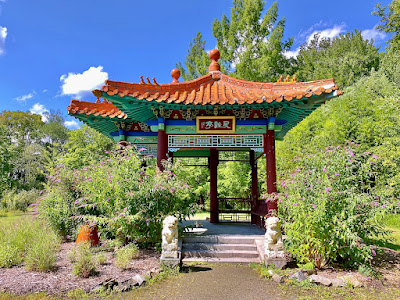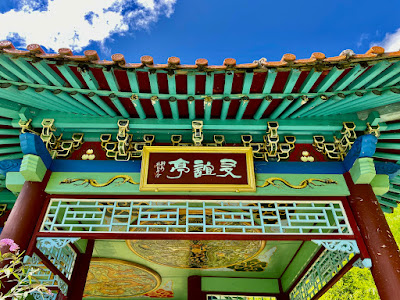Sleepy Cat Farm is the creation of Fred Landman who first purchased the property located in Greenwich, Connecticut in 1994. He then embarked on a decades long restoration and expansion of the home and gardens. The extensive gardens are without a doubt one of the most beautiful and well maintained garden properties that I have ever visited. Its size and quality dwarfs most well established private and public gardens, including some of the most noteworthy of botanic gardens that I have visited.
For the purposes of this blog, I am only going to focus on the Chinese Pavilion and surrounding Asian inspired garden areas located at Sleepy Cat Farm. I initially discovered Sleepy Cat Farm via a cable television show called the Garden Chronicles (season 1, episode 3). Once I realized there was a Chinese pavilion, and that the garden was easily within reach of my home, I decided to visit as a participant in a Garden Conservancy Open Days event. My concern was that I would find only the pavilion, which by itself might not meet my criteria for my garden adventure list/blog. However, once I arrived on site, and directly headed to the pavilion (primarily to avoid the arrival of 700+ visitors), I discovered a much more extensive garden design that incorporated many aspects of Asian gardens. Pleasantly surprised, I realized it was going to be a long day.
Website: http://www.sleepycatfarm.com/
My first view of the Chinese pavilion was from the north end of a long serpentine hornbeam hedge, anchored at the north end by a large stature of Atlas (check out this map).
 |
| Source: http://www.sleepycatfarm.com/expanding-horizons/ (edited used without permission) |
 |
| Atlas |
As I made my way along this path way, the pavilion, which sits on a small island in the middle of a small pond, came into view. This is not the typical pathway for visitors, but is without a doubt the most dramatic - something I have never experienced within all of the gardens I have visited.
A visit via a Garden Conservancy Open Day is recommended. The experience will transform any visitor and enhance anyone's love of gardening.




















































